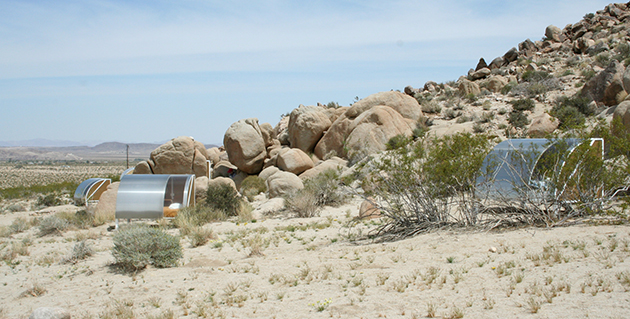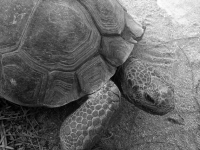14.4.14

Slingshot through the sky in a silver eagle guzzling down dinosaur blood and chasing the sunset crossing an expanse of acidifying ocean, my body arrives but as my friend Benny says, my soul is still traveling by bus. I am reunited with my bicycle and I drive with a woman named after a glowing night sky caused by collision of energetically charged particles, out of the polis-jungle and into the desert. The Mojave Desert is a place long romanticized for its emptiness, but that is only half-truth, like the half-tree, half-yucca that grow here, like the half-human, half-horse that I am seen as in the place I just came from, the place that is in the process of shedding its skin like a snake. I stare out the car window and flip through fresh memories of a squatted army base transformed into community gardens, a NATO field cultivated into a classroom, and a parking lot jackhammered into a self-organized park. Half in the past and half awake, we turn off Twentynine Palms Highway and head up a long sandy road towards the Institute of Investigative Living. As the car rolls to a stop in a wash surrounded by two small mountains made out of boulders and studded with nine metal pods, it is here I will celebrate my anniversary of traveling through the pluriverse for the past two years. I step out of the car and into another form of daily life: another bed to sleep in, another running route, another maze of geography my brain begins to record a map of, another ecosystem of bacteria and fungi integrating into my internal ecosystem, another set of friends that helps me see there is more than I thought possible, another set of mysteries, questions and conundrums. As I approach the metal Wagon Station I will call home for the coming weeks, I can feel the magnetic field that pulled me here. A magnetic field electrified with currents of curiosity for the people who live here, who take agency over their lives, the ecosystem that they are a part of, growing and decomposing together. I pull open the hatch on my Wagon Station and crawl into my sleeping bag, falling asleep under the same sky, bathing in the lunar eclipse, and waking up to the same sun.

Katherine Ball was in residence as our HDTS Scout in Spring 2014.
The HDTS Scout Residency is dedicated to learning more about the people and places that make up our diverse and ever evolving community.
Originally from Detroit, Michigan, Katherine has worked on projects around the world, exploring alternatives to the dominant discourse. Some of these include: bicycling across the US to interview Americans working on small-scale solutions to the climate crisis, coordinating a national day of action to halt business at banks and corporations unduly influencing state laws, living in an off-grid floating island building mushroom filters to clean a polluted lake, and studying the behaviors of various species acting as the ecological counterpart to civil disobedience. An amateur in the best sense of the word, Katherine strives to give more energy to our dreams than our fears.
During her residency, Katherine engaged in a series of in-depth interviews and conversations with high desert residents, focusing on our human impact on the desert landscape. Her book represents a condensed version of those discussions, encompassing water conservation, big solar, wildlife linkages, and asks: what is a sustainable life in the desert?










